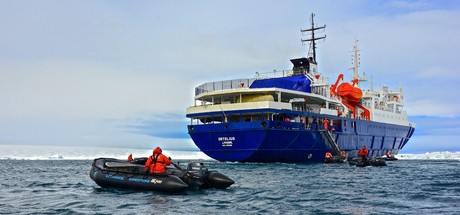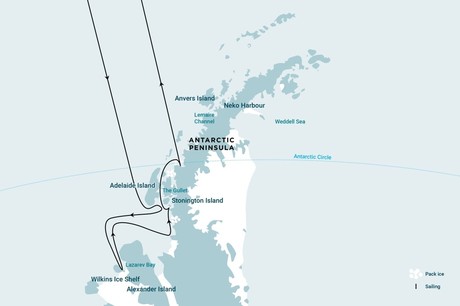Prices on this page are indicative rates
Final price may change due to currency fluctuations. Choose to pay in NZD, AUD, GBP, USD or EUROs. Contact us today and secure your small ship cruise.
Join us on a unique expedition to the heart of uncharted Antarctica, where maps fail and the horizon still holds secrets. On this extraordinary journey, we navigate the unexplored waters around Lazarev Bay and the mysterious Glinka Islands, a region where old aerial photographs (1939–1941) serve as reference for existing charts.
Based on previous expeditions, we know that the official maps do not match what we actually see: islands appear where the charts show nothing, and positions can be off by several kilometers. This sets the perfect stage for a true exploration voyage. One where we may even chart new islands that have remained hidden beneath ice or simply went undocumented.
Ice and daylight permitting, we will sail among icebergs in the “iceberg graveyard” of Lazarev Bay, aiming to push further south toward these mysterious uncharted islands. Two of them are of significant size and may, in fact, be entirely new to the world. With an extended itinerary of 14 days, we create time for real exploration: time to embrace the unknown.
An expedition in the truest sense of the word, a chance to rediscover the White Continent. Perhaps together, we’ll write a new chapter in the history of Antarctica.
Highlights
• On this extraordinary journey, we navigate the unexplored waters around Lazarev Bay and the mysterious Glinka Islands, a region where old aerial photographs (1939–1941) serve as reference for existing charts.
• Ice and daylight permitting, we will be aiming to push further south toward these mysterious uncharted islands.
-
Day 1: End of the world, start of a journey
Your voyage begins where the world drops off. Ushuaia, Argentina, reputed to be the southernmost city on the planet, is located on the far southern tip of South America. Starting in the afternoon, you embark from this small resort town on Tierra del Fuego, nicknamed “The End of the World,” and sail the mountain-fringed Beagle Channel for the remainder of the evening.
-
Day 2 - 3: Path of the polar explorers
Over the next two days on the Drake Passage, you enjoy some of the same experiences encountered by the great polar explorers who first charted these regions: cool salt breezes, rolling seas, maybe even a fin whale spouting up sea spray. After passing the Antarctic Convergence – Antarctica’s natural boundary, formed when north-flowing cold waters collide with warmer sub-Antarctic seas – you are in the circum-Antarctic upwelling zone.
Not only does the marine life change, the avian life changes too. Wandering albatrosses, grey-headed albatrosses, black-browed albatrosses, light-mantled sooty albatrosses, cape pigeons, southern fulmars, Wilson’s storm petrels, blue petrels, and Antarctic petrels are a few of the birds you might see.
-
Day 4: Through the Pendleton Strait
Arriving at the Antarctic Peninsula near the Antarctic Circle. If sea ice conditions permit, you may continue through Pendleton Strait and attempt a landing at the rarely visited southern tip of Renaud Island. Here, you have the opportunity to encounter the first Adélie penguins of the voyage and enjoy spectacular views of icebergs in this surreal, snow-swept environment.
Later in the afternoon, we will continue our journey towards Adelaide Island and Marguerite Bay, crossing the Polar Circle. We will spend the night in the area of Crystal Sound, where the scenery is so captivating it may keep you awake into the early hours. This region also offers the chance to spot orcas, humpback whales, and minke whales.
-
Day 5 - 9: Into Marguerite Bay and sailing toward Lazarov Bay
We sail into the majestic Marguerite Bay, surrounded by ice-cloaked islands and soaring peaks. Wildlife sightings may include humpbacks, leopard seals, and possibly Adélie penguins. If ice allows, we may land at Pourquoi Pas or Horseshoe Island before continuing toward Lazarov Bay.
We navigate into Lazarov Bay and will explore this a remote area with its icebergs of all shapes and sizes dominate the landscape. Navigation is challenging, and if conditions are favorable, we’ll launch Zodiacs for a stunning ice cruise and prepare for deeper exploration. This is true expedition territory, raw, remote, and rarely visited.
Weather and ice permitting, we head even further south, aiming to reach islands never visited before. With every mile, we step deeper into the unknown, a voyage of discovery in the purest sense. In the evening, we begin repositioning northward, leaving behind the uncharted edges of Antarctica.
-
Day 10 - 11: The Gullet and Detaille Island
If conditions allow, we then sail through The Gullet, one of the most impressive narrow channels in Antarctic, with towering mountains either side, birds following the ship and playful penguins and seals frolicking in the water as we sail through this very special part of the journey. If ice conditions allow we will also carry out a landing or cruise in the afternoon.
We may make a landing at an abandoned British research station here, taking in the island’s lofty position and imposing glaciers scenery.
-
Day 12 - 14: Familiar seas, familiar friends
Your return voyage is far from lonely. While crossing the Drake, you’re again greeted by the vast array of seabirds remembered from the passage south. But they seem a little more familiar to you now, and you to them.
-
Day 15: There and back again
Every adventure, no matter how grand, must eventually come to an end. It’s now time to disembark in Ushuaia, but with memories that will accompany you wherever your next adventure lies.
-
Please note:
All itineraries are for guidance only. Programs may vary depending on ice, weather, and wildlife conditions. Landings are subject to site availabilities, permissions, and environmental concerns per IAATO regulations. Official sailing plans and landing slots are scheduled with IAATO prior to the start of the season, but the expedition leader determines the final plan. Flexibility is paramount for expedition cruises. The average cruising speed for our vessel is 10.5 knots.
-
18 February, 2026 to 04 March, 2026
 2 portholes
2 upper / lower berths
Private shower & toilet
Desk & chair
Flatscreen TV
Telephone & WiFi (supplemented)
Hair dryer
Ample storage space
2 portholes
2 upper / lower berths
Private shower & toilet
Desk & chair
Flatscreen TV
Telephone & WiFi (supplemented)
Hair dryer
Ample storage space
 2 portholes
1 upper / lower berth + 1 single lower berth
Private shower & toilet
Desk & chair
Flatscreen TV
Telephone & WiFi (supplemented)
Hair dryer
Ample storage space
2 portholes
1 upper / lower berth + 1 single lower berth
Private shower & toilet
Desk & chair
Flatscreen TV
Telephone & WiFi (supplemented)
Hair dryer
Ample storage space
 2 portholes
2 lower berths
Private shower & toilet
Desk & chair
Flatscreen TV
Telephone & WiFi (supplemented)
Hair dryer
Ample storage space
2 portholes
2 lower berths
Private shower & toilet
Desk & chair
Flatscreen TV
Telephone & WiFi (supplemented)
Hair dryer
Ample storage space
 2 windows
2 lower berths
Private shower & toilet
Desk & chair
Flatscreen TV
Telephone & WiFi (supplemented)
Hair dryer
Ample storage space
2 windows
2 lower berths
Private shower & toilet
Desk & chair
Flatscreen TV
Telephone & WiFi (supplemented)
Hair dryer
Ample storage space
 3 windows
2 lower berths
Private shower & toilet
Desk & chair
Small sofa
Refrigerator
Coffee & tea maker
Flatscreen TV
Telephone & WiFi (supplemented)
Hair dryer
Ample storage space
3 windows
2 lower berths
Private shower & toilet
Desk & chair
Small sofa
Refrigerator
Coffee & tea maker
Flatscreen TV
Telephone & WiFi (supplemented)
Hair dryer
Ample storage space
 2 windows (minimum)
1 double bed
1 single (sofa) bed
Private shower & toilet
Desk & chair
Flatscreen TV
Telephone & WiFi (supplemented)
Refrigerator
Coffee & tea maker
Hair dryer
Ample storage space
2 windows (minimum)
1 double bed
1 single (sofa) bed
Private shower & toilet
Desk & chair
Flatscreen TV
Telephone & WiFi (supplemented)
Refrigerator
Coffee & tea maker
Hair dryer
Ample storage space
-
Ortelius
Ortelius
Vessel Type: Expediton
Length: 91m
Passenger Capacity: 108-123
Built / Refurbished : 1989 / 2015
Ortelius was originally the Marina Svetaeva. Built in Gdynia, Poland in 1989, it served as a special-purpose vessel for the Russian Academy of Science. Later it was re-flagged and renamed after the Dutch/Flemish cartographer Abraham Ortelius (1527 – 1598), who in 1570 published the first modern world atlas: Theatrum Orbis Terrarum or Theater of the World. At that time his atlas was the most expensive book ever printed. Ortelius is classed by Lloyd’s Register in London and flies the Dutch flag.
Perfect for Any Expedition
The vessel has the highest ice-class notation (UL1, equivalent to 1A) and is therefore suitable to navigate in solid one-year sea ice as well as loose multi-year pack ice. Ortelius can accommodate up to 108 passengers and has an abundance of open-deck spaces. It is manned by 24 highly experienced nautical crew members, 20 hotel staff, eight expedition specialists (one expedition leader, one assistant, and six lecturer-guides), and one doctor.
Ortelius: a Vessel with Comfort and Character
Please be aware that a small number of cabins may have a partially obstructed view due to the size of the windows and the design requirements of the ship. For example, some windows may be partly obstructed in the lower half by a gangway. The best view is always on the outer deck or the bridge. Though our voyages are primarily meant to offer our passengers an exploratory wildlife program with as much time ashore as possible, Ortelius offers all the comforts of a standard hotel ― along with a bar and lecture room. Flexibility assures maximum wildlife opportunities. As such, Ortelius carries 10 Zodiacs with 60hp Yamaha engines.
Age & Nationality
Passengers on a typical voyage range from in their 30s to their 80s, with the majority usually between 45 ― 65. Our expeditions attract independent travelers from around the globe who are characterized by a strong interest in exploring remote regions. The camaraderie that develops on board is an important part of the Oceanwide experience, and many passenger groups include several nationalities.
What to Wear
In keeping with the spirit of expedition, dress on board is informal. Bring casual and comfortable clothing for all activities, and keep in mind that much of the scenery can be appreciated from deck ― which can be slippery. Bring sturdy shoes with no-slip soles, and make sure your parka is never far away in case one of our crew shouts “Whales!” over the loudspeaker and you have to dash outside in a moment’s notice. Opt for layers, as it is comfortably warm aboard the ship though often cold on deck.
How to Pay
Refreshments and souvenirs will be charged to your cabin. The day before departure you can settle your bill with the hotel manager, paying by credit card (Visa or MasterCard) or cash (euro, or in some cases dollar). We cannot, however, accept checks. Though the prices and standard currency on board is in the euro, other currencies may be accepted at the discretion of the hotel manager, at prevailing rates.
Electric Current
The electrical supply aboard ship is 220v, 60Hz. Electrical outlets are standard European with two thick round pins, so some passengers may need a 220v/110v converter.
Gratuities
The customary gratuity to the ship’s service personnel is made as a blanket contribution at the end of the voyage and is divided among the crew. Tipping is a personal matter, and the amount you wish to give is at your sole discretion. As a generally accepted guideline, we suggest 8 ― 10 euros per passenger per day. It is better for the crew if you give cash.
Non-Smoking Policy
We have a non-smoking policy inside all our vessels, though you can smoke in certain designated areas. We ask that you please respect the wishes of non-smokers.
Your Physical Condition
You must be in good overall health and be able to walk several hours per day. The expedition is ship-based and physically not very demanding, but we spend as much time as possible on shore. You are, however, welcome to remain aboard the ship if you prefer. To join most excursions you must be able to get up and down the steep gangway ― from the ship to the water level ― to board the Zodiacs. Staff will assist you in and out of the boats, and boarding will become progressively easier with practice, but conditions on shore can be slippery and rocky. Remember, you will be traveling in remote areas without access to sophisticated medical facilities, so you must not join this expedition if you have a life-threatening condition or need daily medical treatment.
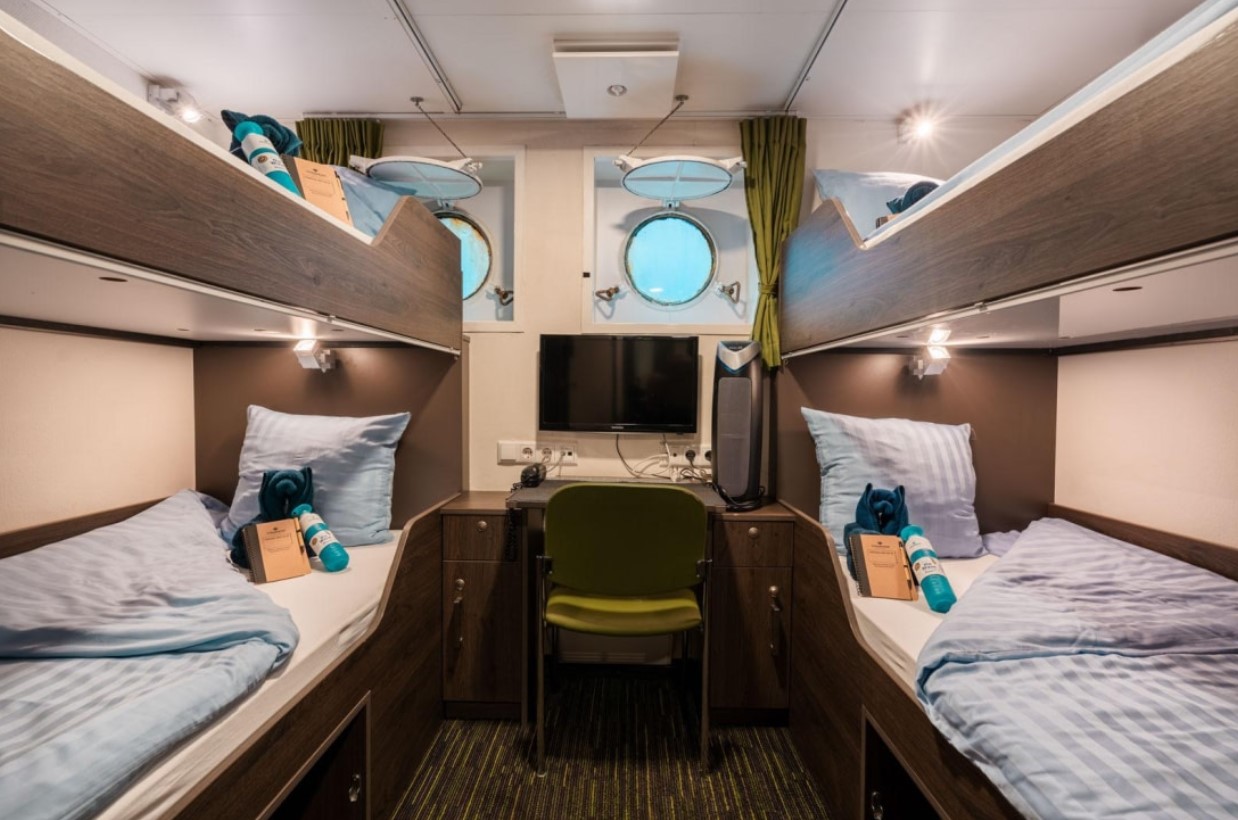
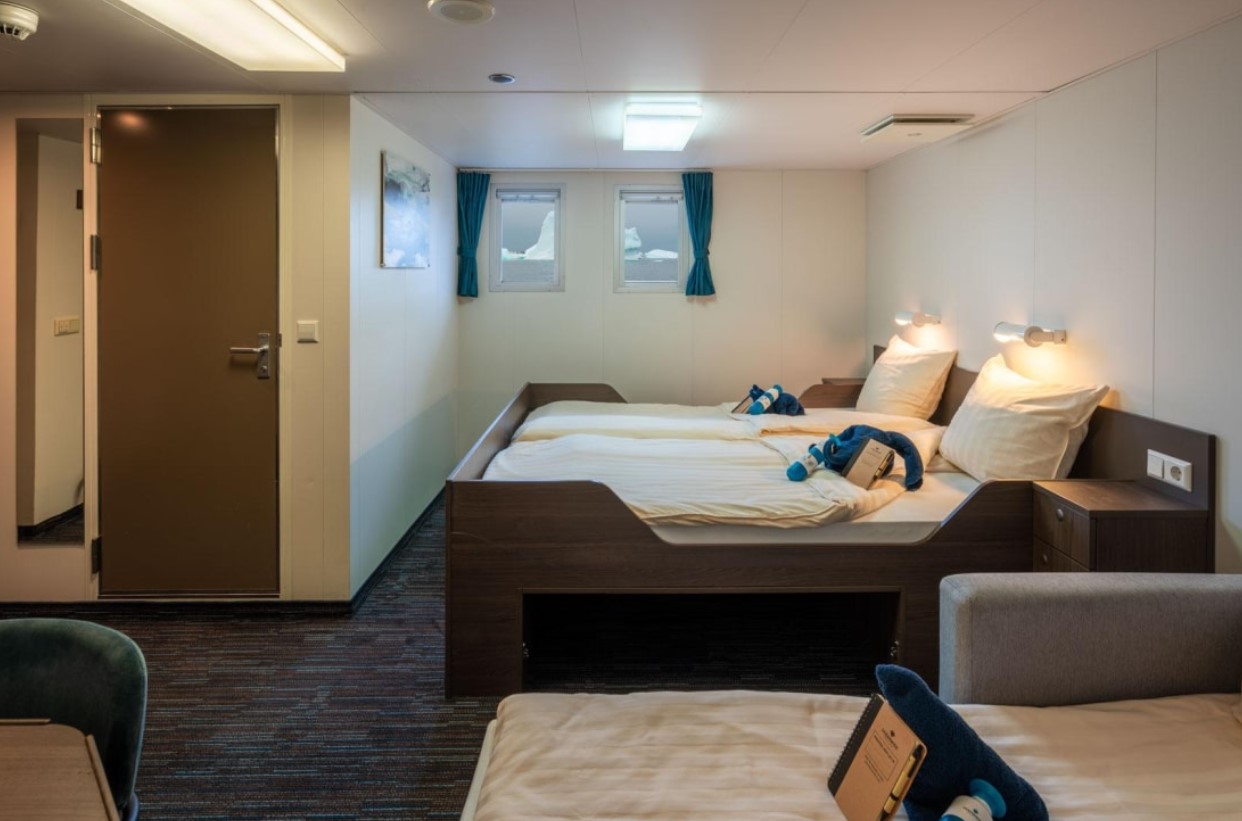
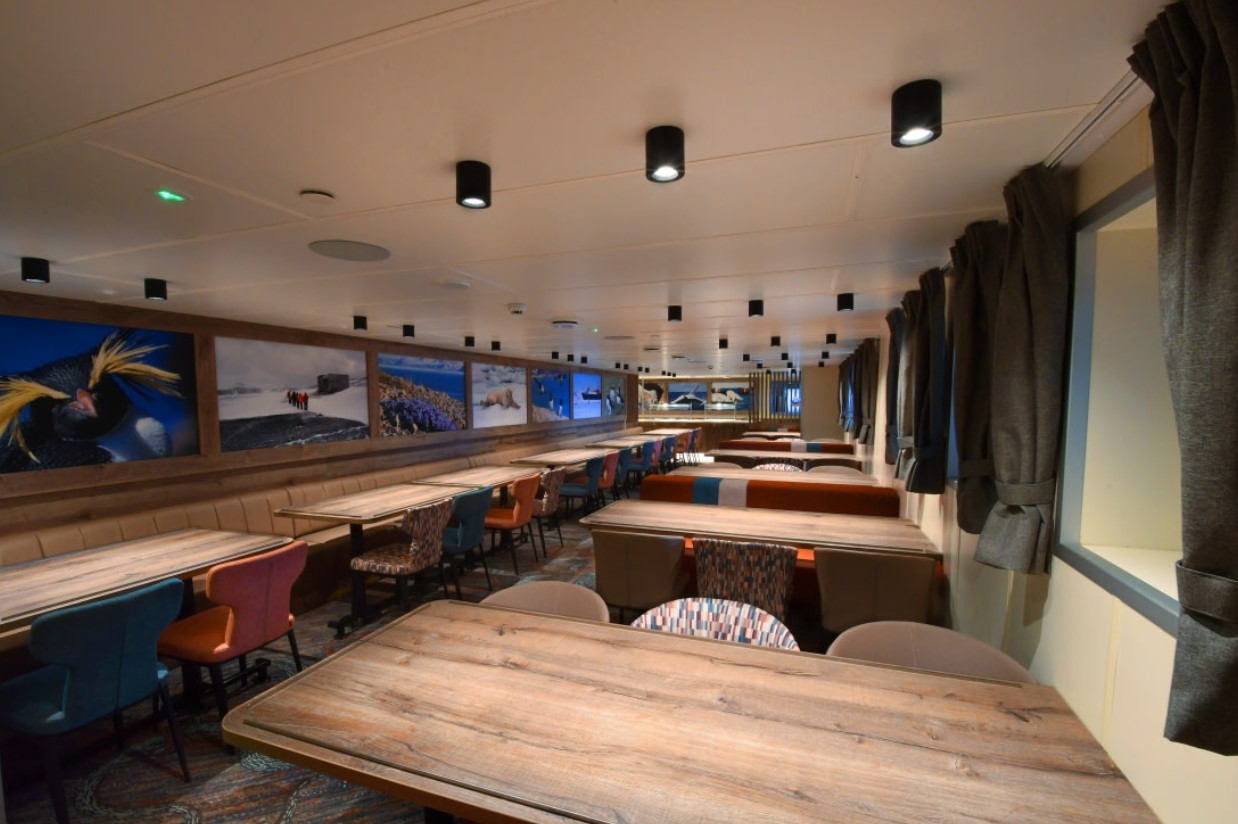
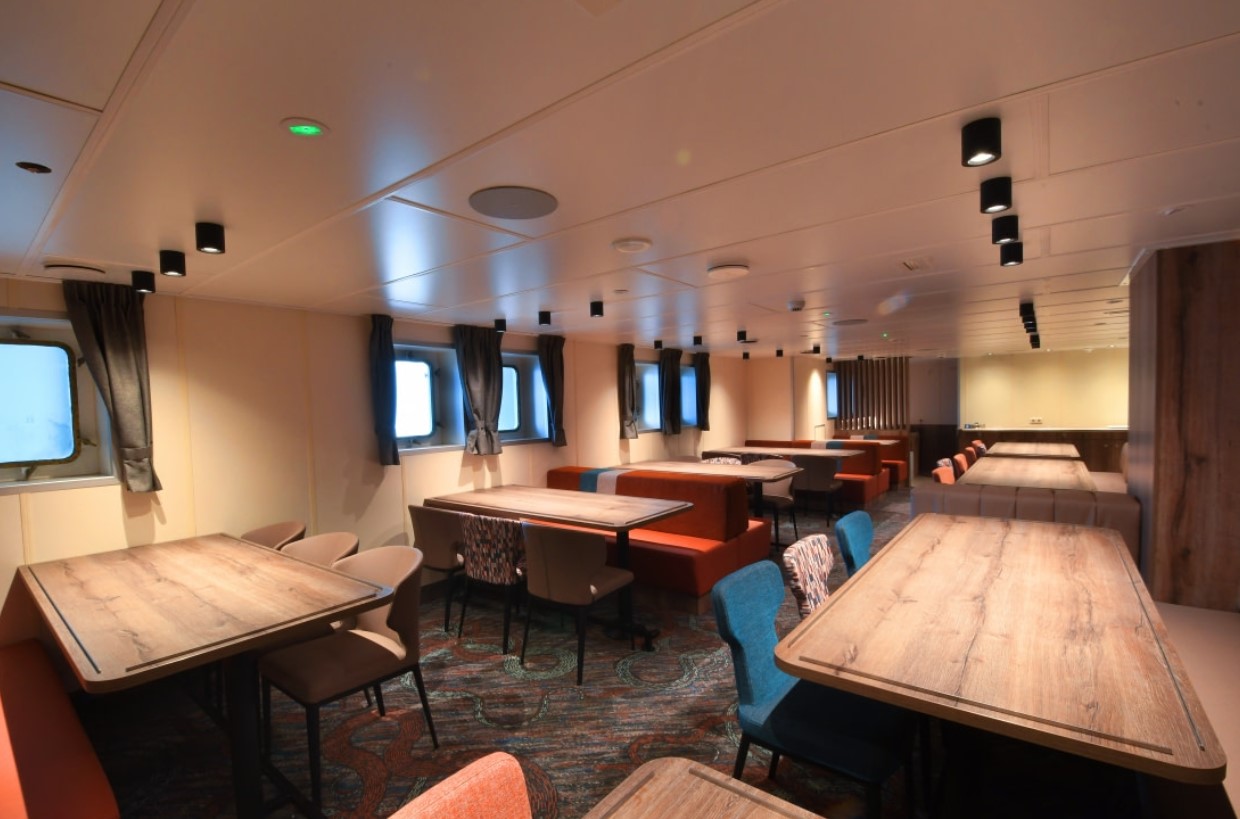
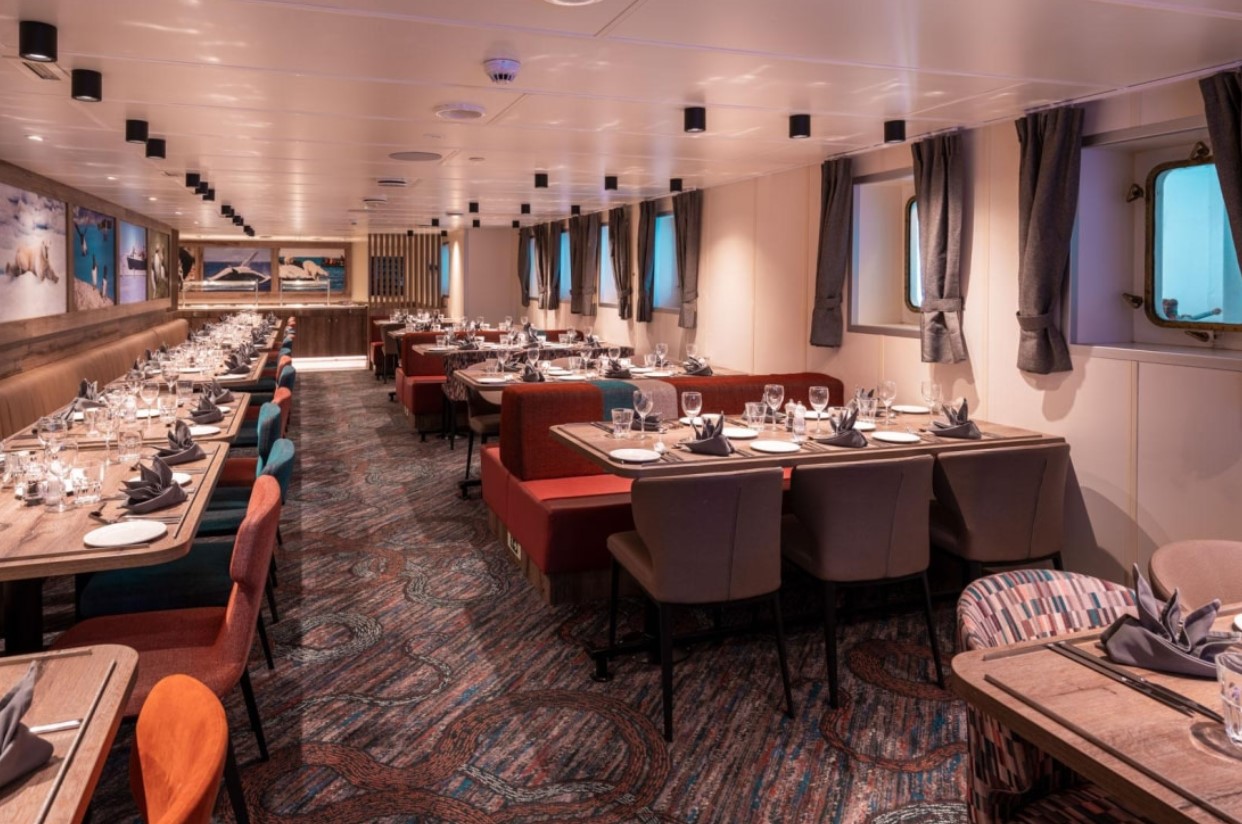
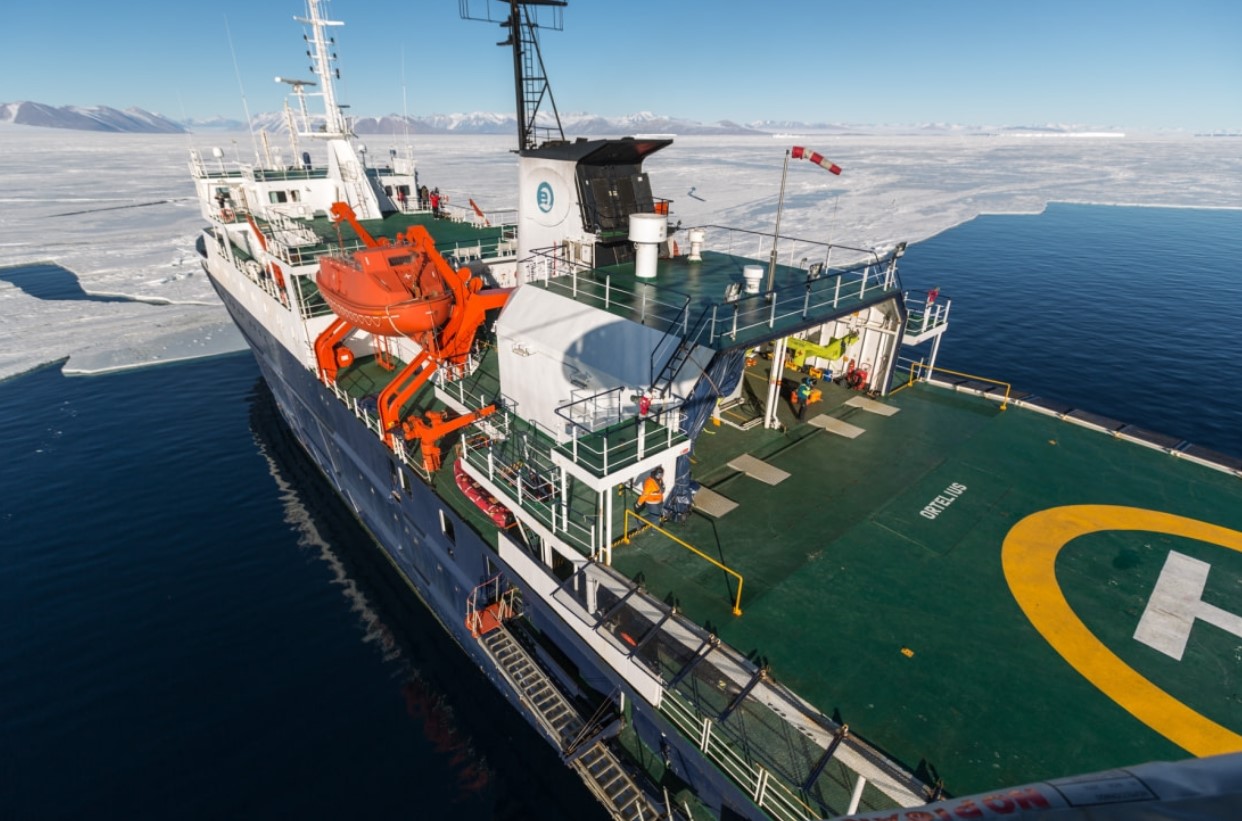
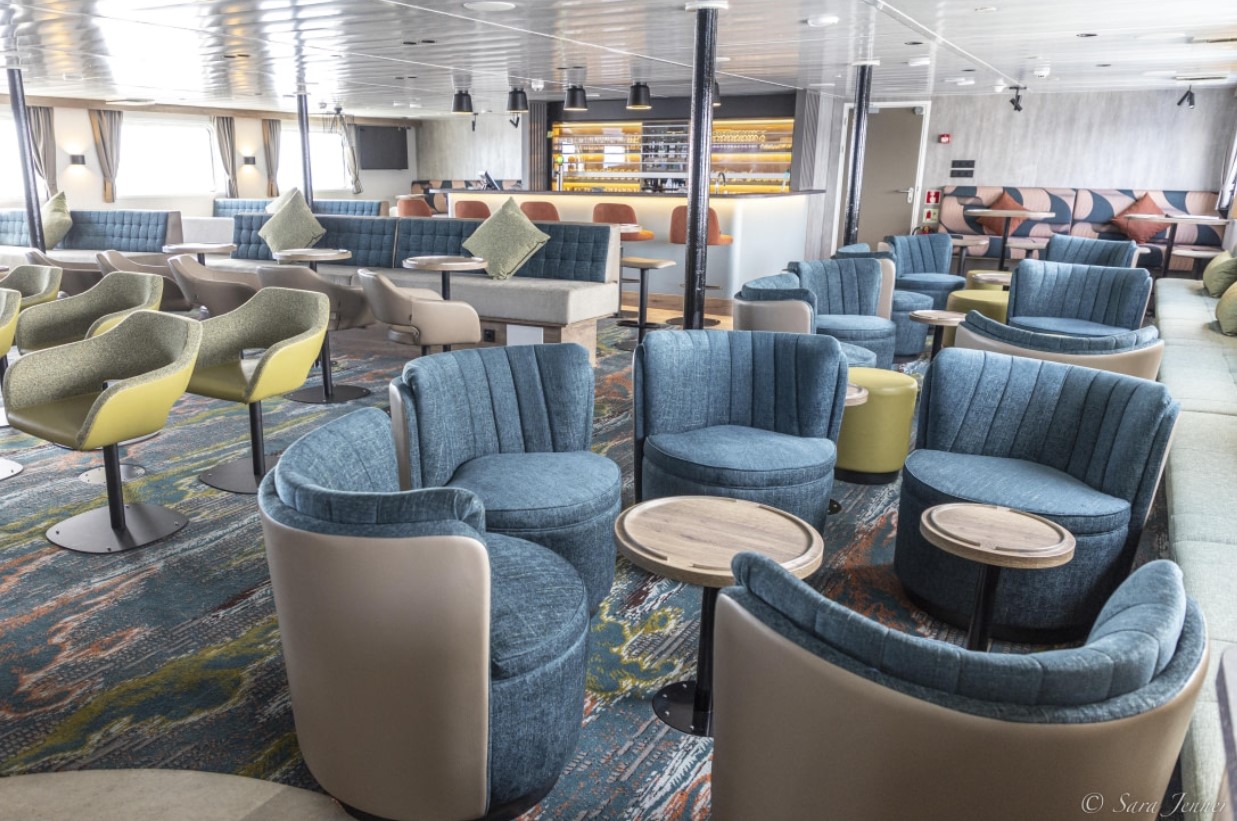
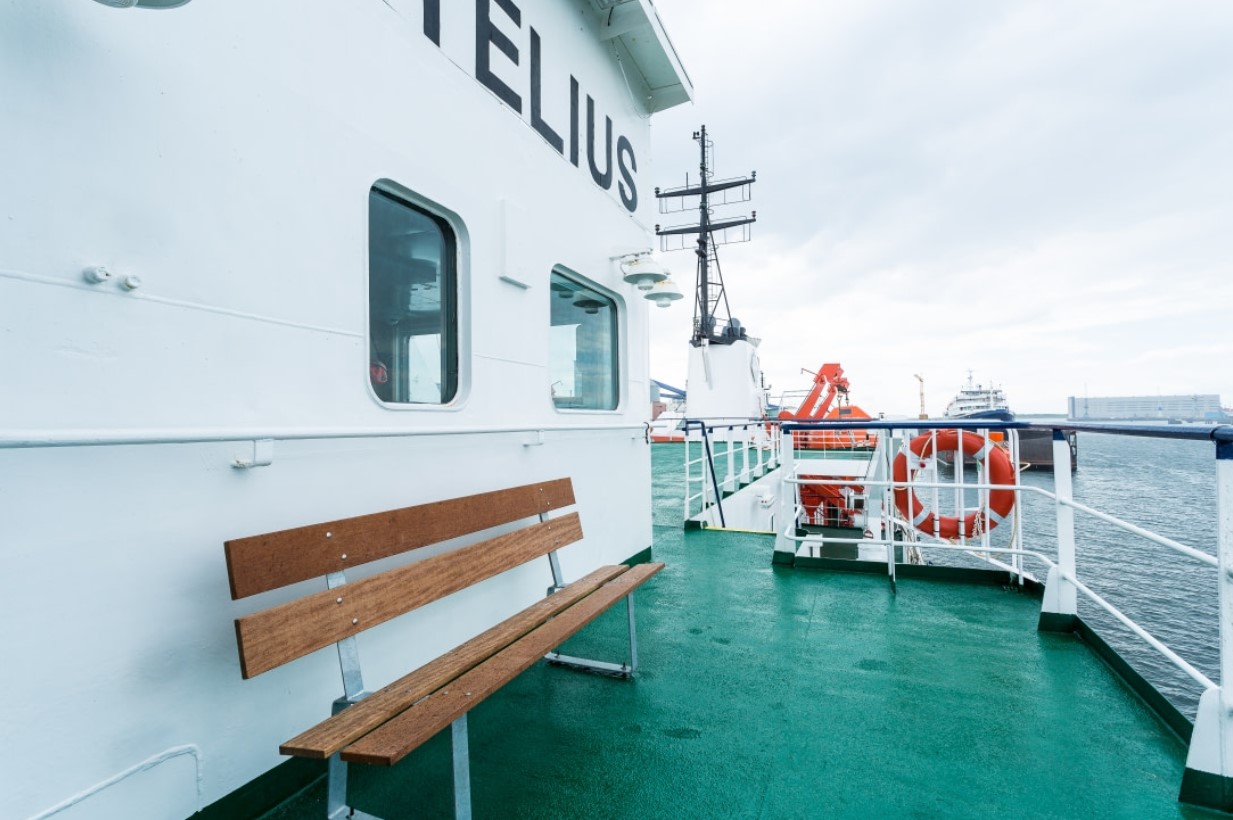
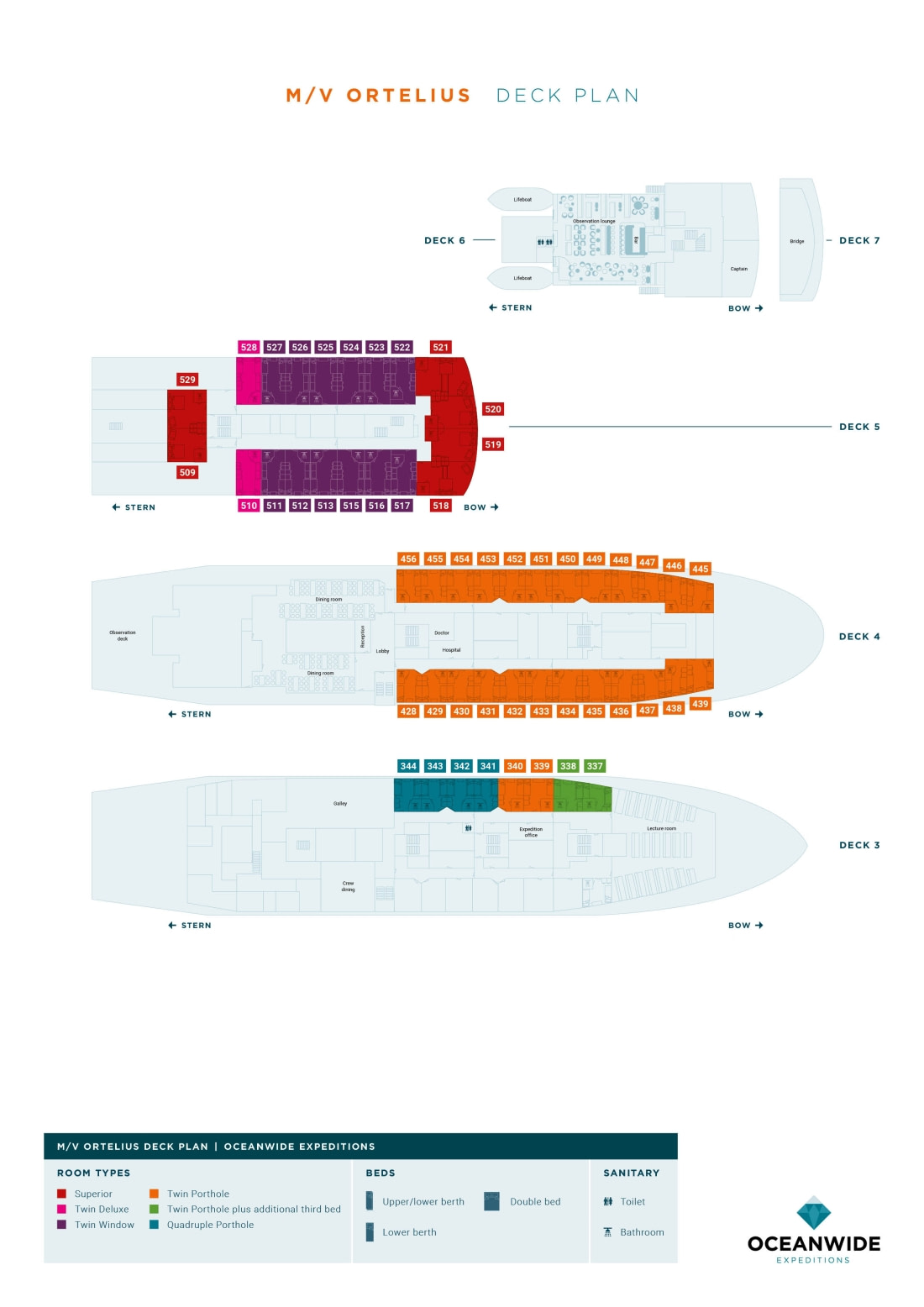
Navigational workshop FREE
Select this activity if you’re interested in learning the history, theory, and practice of land and sea navigation. Topics covered include the use of sextants, chart positioning, and GPS functions, among others. All courses led by experienced expedition guides. No additional equipment needed.

